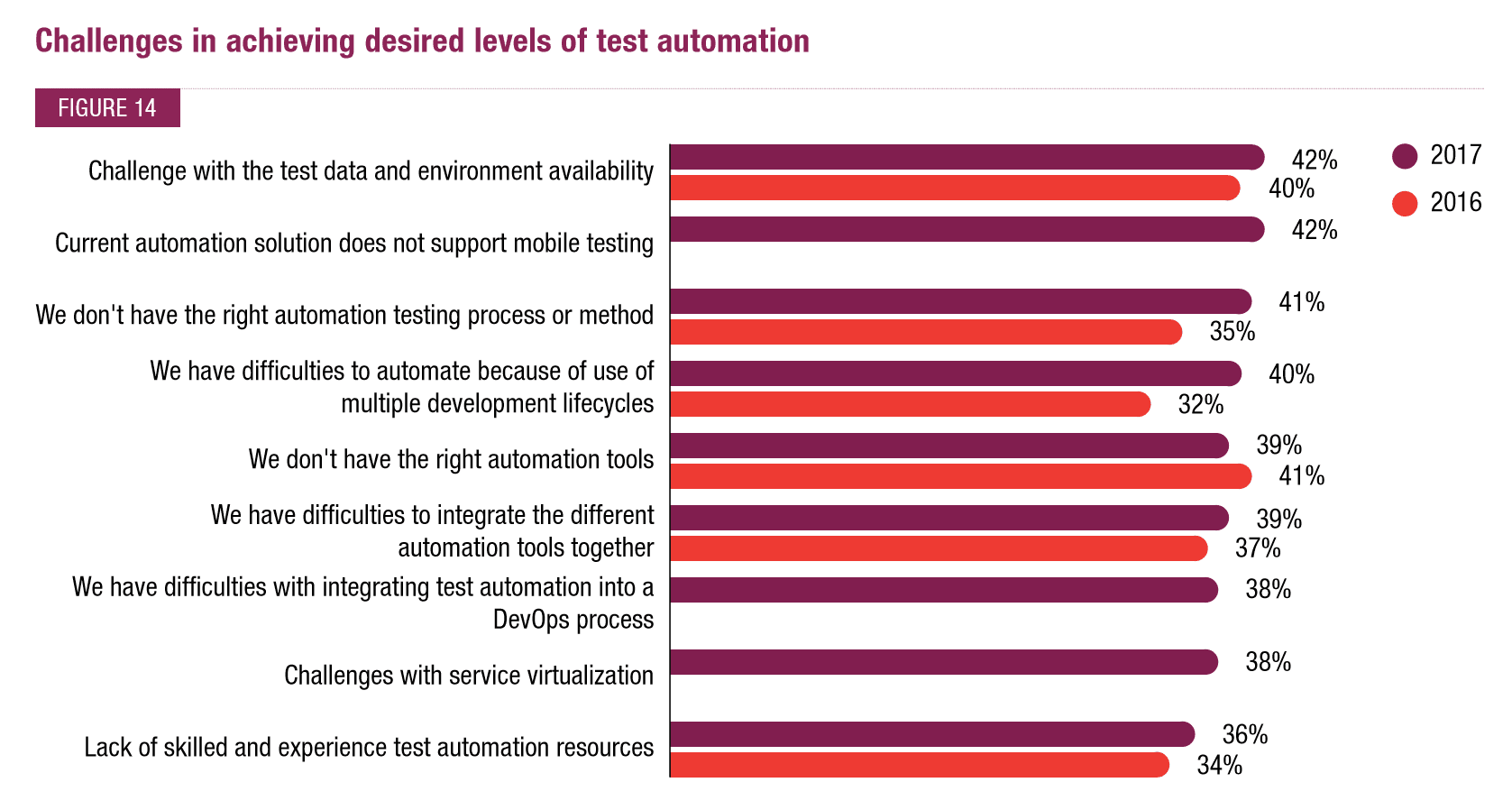As many yoga instructors do, they encouraged students to find balance. It’s an effective bit of advice in that it puts the onus on the practitioner. It’s also a popular concept for software testing, as industry experts often recommend that software teams find the balance between automation and manual testing practices. Another similarity is the trajectory of their adoption rates. One does not dive into yoga, but slowly adopts it over time until it becomes a part of their daily routine. The same goes for test automation: you can’t expect to start automating everything from scratch. Good test automation is the culmination of work over time.
Why not all manual?
Manual testing is fine, and was once the status quo, but with high adoption of Agile and continuous delivery methodologies, it just doesn’t scale. For software development, every enhancement or new feature that’s rolled out for an app must have a corresponding set of tests to ensure the new functionality works and does not break the code from the previous version. In this regard, to check all of the file directories, database, workflows, integrations, rules and logic manually would be extremely time consuming.
For companies looking to improve time to market and increase test coverage, automation provides significant advantages over manual testing. A typical environment can host thousands of test cases of varying complexity to be executed effortlessly and nonstop. As a result, automation dwindles the time required to perform mundane, repetitive test cases from days to hours and even minutes if you run in parallel. That inherent velocity increase is what attracts teams to automated testing.
Why not all automation?
The benefits of automation are obvious. Automation provides the ability to quickly react to ever-changing business requirements and generate new tests continuously. Is it reasonable then to assume that the more you automate the more benefits you reap? Then why not just automate everything?
The short answer, its very difficult. According to the World Quality Report 2017-18 Ninth Edition, these are the top challenges enterprise are facing in regards to test automation.

Traditionally you would automate only once your platform is stable and the user flow is pretty consistent. This was primarily due to the amount of time it took to write a test, sometimes hours and even days. Plus the amount of time it took to update and maintain tests as code changed. The ROI was not justified up to the point your user flow is stable.
Feedback from our customers such it has changed. We recently heard a number of our clients who automate everything and even as early as wireframes are ready. We reduced authoring time by about 70% of the time and maintenance time by about 90%. Creating a user flow now takes a few minutes with Testim and so is updating the user flow. Reducing the time per test to a few minutes instead of hours and days makes it much more affordable to automate, providing immediate ROI from feedback loop benefits. This is made possible with the help of our AI (Artificial Intelligence) underneath the hood making the tests much more faster and stable.
So should you strive to 100% automation? Well no but you can get to 80%-90% which was unheard of until recently. There are still scenarios that only humans can do such as Face ID. There are also other aspects of your Software Development Lifecycle (SDLC) that automation is dependent on.
Summary
There is an ongoing struggle to keep up with the rate dictated customer pressure and competition to produce on a continuous basis. And not just produce for production’s sake, but a quality product that’s been thoroughly tested. That’s why we created Testim…
To help software teams:
- Increase coverage by 30% in 3 months
- Reduce number of missed bugs by 37%
- Increase team productivity by 62%
- Reduce regression testing costs by 80%
- Speedup testing schedules by 3 months
Sources
- https://techbeacon.com/world-quality-report-2017-18-state-qa-testing
- https://dzone.com/articles/automated-vs-manual-testing-how-to-find-the-right
- https://blog.qasource.com/the-right-balance-of-automated-vs.-manual-testing-service
- http://sdtimes.com/software-testing-is-all-about-automation/#sthash.5Idkps2O.dpuf
- http://sdtimes.com/report-test-automation-increasing/#sthash.HlHQmD2l.dpuf
- https://appdevelopermagazine.com/4935/2017/2/8/test-automation-usage-on-the-rise/
- https://techbeacon.com/devops-automation-best-practices-how-much-too-much




